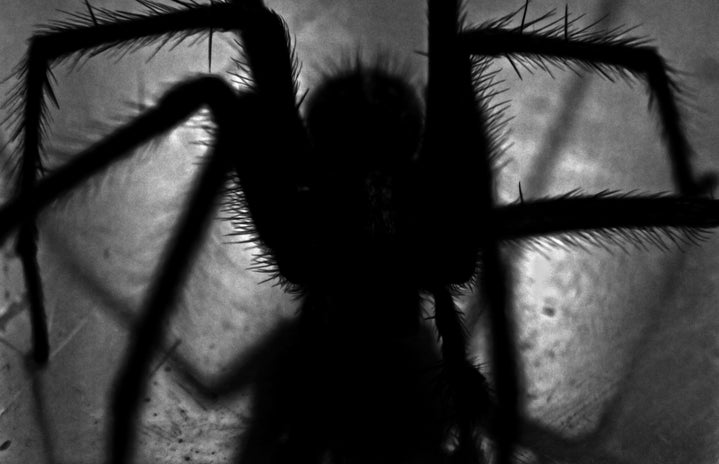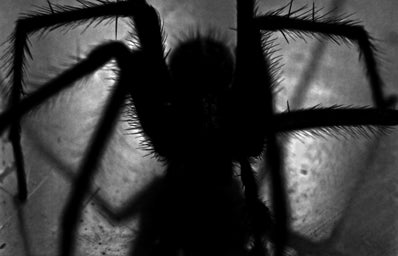The Evolution of Halloween (since Science scares all of us)
Halloween is widely celebrated in America as a time for candy, costumes, and ghostly entertainment throughout the holiday evening. However, it didn’t originate in America. Halloween is very ancient, and in some cultures it originated from a place of fear and despair.
How Culture, Religion and Cults affected Halloween:
Halloween can be dated back as far as two thousand years ago, where the Celts celebrated something known as ‘The Festival of Samhain’ which is what we most commonly know as Halloween today. On October 31st, Celtic people would wear costumes and dance around bonfires to ward off and or appease evil spirits and to hide from the Demon known as Samhain.
It is believed that November 1st is the beginning of darker times, winter times, and where death occurred the most. It was also believed that at the end of the summer, the barriers between the dead and the living were very thin, and was a time for the living to see their deceased loved ones.
Romans were also another influence on Halloween, when the Romans conquered The Celts in the year 43 A.D. They incorporated their own fall festivities called Feralia; celebrating the spirit of the dead.
By the time Christianity had spread all over Britain, Halloween took a different turn to where the poor would travel to wealthy homes, asking for soul cakes in exchange for a promise to pray for the home owner’s deceased relatives.
History of Trick or Treating
All of us on October 31st dress up and knock door to door asking for candy; “Trick or Treat?”
Trick or Treating evolved from Mumming, which was a ritual where people dressed as demons and ghosts, performed dances around the bonfire and received treats to appease the demons.
In England; Scotland and Ireland, dating back to the middle ages, people dressed in costumes would go from door to door and perform an act or “trick” if you will, in exchange for food and drink. The term “Trick or treat” was a subtle suggestion that if a treat would not be given upon request, they would perform a trick of mischief upon the owner or their home.
History of Witches & Black Cats
Many of you probably wonder why are witches associated with Halloween? Why is Hocus Pocus popular for being a Halloween movie?
Witches are associated with Halloween due to the Wiccan religion. The religion itself originated as far back as Britain in the 1950s, and attracted more followers in Europe and the United States. For the followers of this religion, it is believed that magic is most powerful on Halloween; October 31st, which was considered the day before the new year, November 1st. The day before the new year is believed to be the day that God, Samhain died, and was reborn on November 1st. They marked the new year with the beginning of winter, when “the earth went to sleep,” the end of harvest, and when more deaths supposedly occurred.
As for the supernatural superstitions behind black cats, they are regularly regarded worldwide as a sign of an approaching bad omen. However, this wasn’t always the case. If you go thousands of years into the past when Ancient Egyptians were around building pyramids and designing hieroglyphics, you’d find black cats,along with their more vibrantly colored feline friends, were actually worshipped. This is because the ancient Egyptians believed cats (along with other animals in general) to be godly aspects of the ones they worshipped. The cat currently chasing that laser pointer around your living room floor was a Demi-god to our friends in ancient Egypt. (Keep that one in mind before using your spray bottle on them next time)!
Why were cats so much more important if all animals were Demi-gods, you may ask? It was actually rather quite simple. The ancient Egyptians were an agrarian people, and in other words they cultivated a lot of land. With that comes grain, and they store grain which in turn attracted mice…can you see where this is going?
Cats kept the mice in check and saved the Egyptian people’s grain, and would even hunt dangerous serpents nearby which grew the furry feline’s reputation ten fold. However, this reputation obviously did not last forever.
Their reputation began to falter during the Middle Ages when folklore stated that witches would shape shift into a black cat to hide from witch hunters or even just to use their small form to get from point A to B.
And since this was the Middle Ages, witches were not anyone’s favorite broom riding neighbor.
People began neglecting or even murdering black cats because they believed them to be a sign of an evil omen approaching just by their mere presence, or that they could even be a witch in disguise. And did I mention that if you were to house or aid a black cat in those middle age times, that you could be convicted of witchcraft and hunted down just as the cats were? The superstition obviously grew immensely in America once the Salem Witch Trials began.
Thus, the cat that was once looked upon as royalty and of godly origin, was reduced to an evil, foul and feared creature to be avoided at any cost. (Much like myself if I am ever caught before my coffee!)
History of Jack o’ Lanterns
When you trick the devil, you should know that you aren’t going to get away without any consequences. Jack, however, didn’t think that one through. To further explain this, in an old traditional Celtic story, an old and mean man named Jack loved playing tricks on everyone, including the devil. One day, Jack tricked the devil into climbing a tree. Once the devil did climb the tree, Jack put crosses all around the tree and prevented the devil from climbing down. Jack forced the devil to promise that he wouldn’t take his soul away upon death, and when the devil agreed, Jack let him down by taking the crosses away. After Jack died, with no place to go, no heaven or hell, he was forced to roam the dark Netherlands between heaven and earth. The devil gave Jack a burning coal to make his way through the dark, and Jack put the burning coal in a cut out turnip (his favorite food) and got his nickname ‘Jack o Lanterns’. The Irish and Scottish people at that time would carve scary faces on a turnip, put a burning coal in it, and put it outside their windows or doors to deter Stingy Jack or evil spirits away. When the tradition migrated to America, pumpkins were used because turnips weren’t as common in this time of the year.


